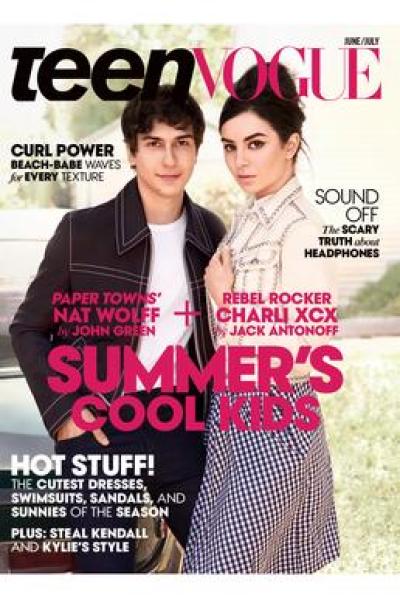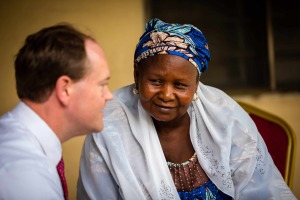Parents, Beware of Teen Vogue's Sex Advice for Your Kids

What happened to coming across the standard cocktail of fashion must-haves, beauty tips and celebrity worship features designed for its millions of teen and tween readers? Teen Vogue just recently decided it was the best interest of our children to publish a jaw-dropping article that made many parents and grandparents wince at the very subject matter.
As a parent, grandparent, Internet safety expert and child advocate, I found the recent article in Teen Vogue Anal Sex: What You Need to Know/How to Do it the Right Way (July 7, 2017), which headlined its website for four days, deeply troubling on many levels.
Parents and caregivers maintain a degree of trust when it comes to the information that is contained in magazine articles targeted to their teens. But who would have thought that the teen version of the Vogue fashion magazine would be instructing youth on this topic and try to convince its young readers how pleasurable it can be?
First and foremost, it is irresponsible for the popular and mainstream magazine to promote sexual activity of any kind. Most parents I know want to and should be the primary source for teaching their children about healthy sexuality. Period. Since when did it become a teen magazine's job to try to normalize and prime children to explore sex acts that they might not have ever considered?

In the digital age, young people are searching the Internet for information on sex. Sadly, many turn to online pornography as their primary source of sex ed, which the author momentarily warns against — the only portion of the article with which I agree. As our nation's children are already grappling with the health effects resulting from pornography (which was recently declared a "public health crisis" in several states), why now must we have to contend with articles written by adults offering its tween/teen readers a play-by-play guide on sex — no matter how it is to be performed?
Hard-core extreme pornography depicting "group sex," "anal sex" and "bestiality" are the new normal for today's youth viewing digital porn. According to research published in Cyberpsychology and Behavior, 83% of boys and 57% of girls have seen group sex online; 32% of boys and 18% of girls have viewed bestiality online. As a result, young girls are often expected to be "porn ready" by their male counterparts and be willing to offer their bodies for penetration via multiple entry points — often feeling the pressure to succumb to the sexual expectations of males.
A 2016 meta-analysis of pornography research reveals adolescent pornography consumption is significantly associated with stronger gender-stereotypical sexual beliefs, earlier sexual debut, increased casual sex behavior, and increased sexual aggression, both as perpetrators and victims.
The article, ripe with numerous diagrams of both the female and male genitalia, labeled gender-neutral as "non-prostate owners" and "prostate owners", states, "This is anal 101, for teens, beginners, and all inquisitive folk. The anus is full of nerve endings that, for some, feel awesome when stimulated."
Given the article's placement in the magazine's "Sexual Health" section, this supposed safe instruction, "anal 101" how-to guide fails to mention the health risks associated with anal sex, which carries the highest risk of transmitting HIV, according to the CDC.
The author goes on to explain in a lengthy and very provocative way — surely to spark interest in pre-teen and teens, both male, female and anyone in between — "Why anal? Anal sex, though often stigmatized and shamed, is a perfectly natural way to engage in sexual activity. People have been having anal sex since the dawn of humanity."
The case is then inadvertently made that the rectum is not physiologically designed for "larger object's" other than passing excretory material. The author goes on to state that "The anus is not as malleable as a vagina, which has the ability to accommodate an infant's head by design. The anus is very tight, and the feeling of having something in your rectal area is unique. It is often described as a feeling of fullness which can be delightful." She then warns her young readers to start slowly, "The anus is a muscle that needs to be worked up to having larger objects inserted."
Besides addressing the supposed and presumed interest of the publication's young female audience on this topic, the article is clearly reaching out to young males who may be considering a first time sexual encounter of this type. An entire section begins with, "For those of you with prostates, being on the receiving end of anal sex can be a great experience."
After a warning on the possible exposure to fecal matter for those engaging in this sexual act, the article (which incidentally contains 32 mentions of the word "anal,") finally ends with a big hoorah, and a strong push to give it a try, which the author nonchalantly concludes "... can be awesome and if you want to give it a go, you do that. More power to you."
So to all concerned parents, please heed this warning: in our current pornified culture of anything goes, don't assume that popular magazines or websites are safe. In fact, it's better to assume that many are not. I urge parents to check out what your kids are reading and viewing, online and offline. Be proactive, and the first line of defense to counter cultural messages, which may be different from the values you are working to instill into your children. Start having conversations with your children about healthy sexuality at an early age and in age-appropriate ways, and certainly beware of Teen Vogue, or for that matter, any publication looking to publish attention-grabbing headlines, to offer up controversial advice.
Check out our Resource Center at our websites for more information, enough.org and internetsafety101.org. Lastly, if you are as distressed by this article as I am, I urge you to write a letter to the editor at web@teenvogue.com.





























